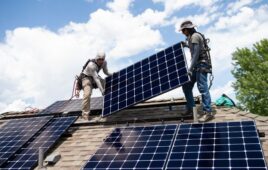On Friday, China’s National Development and Reform Commission, the Ministry of Finance and the National Energy Administration released a joint statement essentially ordering all new utility-scale and distributed generation (DG) solar projects in the country to stop until further notice. The government also reduced tariffs on solar-generated electricity by about 6.7 to 9%.
Since then, many Chinese solar companies have seen significant drops in stock prices, including Sungrow and LONGi.
These actions are aimed at getting a grip on state-supported solar projects which have led to around a US$15.6 billion deficit in China’s renewable energy fund. The government no longer wants to pay for solar development.
DG install volume is now capped at 10 GW (last year, DG accounted for 19 GW), and statements from Asia Europe Clean Energy (Solar) Advisory Co (AECEA) estimate that the country had already installed 10 GW before the announcement was made. All utility-scale installs are essentially blocked at this point as the government abolished a 13.9-GW utility-scale goal. Last year, the country deployed almost 34 GW in utility-scale, and already the government had requested a smaller number.
Roth Capital Partners downgraded China’s 2018 forecast from 52 GW to 35 GW, with an expected overcapacity of as much as 34 GW.
So, what does that mean for the United States? Chinese module suppliers have been pumping out product to meet China’s expected demand. There are also new manufacturing sites popping up across the globe, planning to produce at full capacity. In an oversupply situation, tariffed modules entering the United States could be priced way lower than expected. Large-scale U.S. installers may catch a break, but U.S. module manufacturers may be back competing against cheap Chinese imports.
Story developing…





Tell Us What You Think!